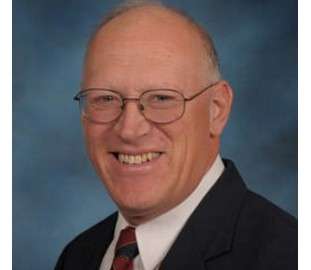“Welcome to my imagination.”
That sign is displayed on the desk of a creative person who manages a theater in small town Kansas, as she imagines how to engage more people in the arts.
Shannon Martin is the director of the Burford Theatre and Ark City Area Arts Council in Arkansas City. Her desk sports the sign, “Welcome to my imagination.”
Shannon went to high school in Iola and earned bachelor’s and master’s degrees from Pittsburg State. She is the mother to four sons: Micah, Riley, Wyatt, and Wade.
Shannon and her husband Grady now live in eastern Cowley County. Grady works for General Electric and runs a cow-calf operation. Their historic farm home, stone barn and rental cabins are near the rural community of Dexter, population 278 people. Now, that’s rural.
In 2017, Shannon took the position as director of the Ark City Area Arts Council and director of the historic Burford Theatre in downtown Arkansas City.
The Burford Theatre was built in 1924. It is named for J. R. Burford, who joined other leading citizens of Ark City in deciding that the community needed a theater. The theater was designed by a Kansas City-based architectural firm called the Boller Brothers that specialized in theatrical buildings and is said to have designed or consulted on the design of more than 300 theaters in the Midwest and west coast.
“There are two trademarks of a Boller Brothers theater,” Shannon said. “One is stained glass medallions in the ceiling, and the other is that the balconies are built with huge steel beams underneath so that there are no columns in the balcony to block the view.” In the case of the Burford, the medallions are in a beautiful sunflower design. The interior of the Burford Theatre itself was designed with a Spanish renaissance theme.
The Burford opened on September 15, 1924 with a silent movie called “The Perfect Flapper.” The silent movies were succeeded by the “talkies,” along with vaudeville shows in the early years. One live performer was Ginger Rogers, for example.
The Burford continued as a movie theater until the early 2000s, when a new multiplex movie theater was built north of town. At that time, the owners donated the Burford to the Ark City Area Arts Council. Local citizens had the dream of restoring the Burford to its original elegant design.
“The restoration took ten years and $10 million,” Shannon said. Today, the theater is beautiful and meticulously restored.
An interesting tradition is found in the dressing room where early performers signed the wall panels. Among the preserved signatures are the Allard Sisters, identified as NY, NY 1928. Another signature is from a dancer who wrote that she danced in the Follies of 1929.
These historic panels have been preserved, and new panels added where modern day performers can sign. Those include many artists such as Ned LeDoux, Jim Stafford, and Joe Diffie, who performed on this stage one month before he passed away in 2020.
The theater is kept extremely busy with live performances, school plays, community theater, kids camps and special events such as weddings, reunions, and holiday parties.
“The Burford is for everyone, for all ages,” Shannon said. “We offer diversity and a wide variety of events, from country music to jazz to gospel. My goal is that the theater would be clean and comfortable with great sound, and that the staff is friendly and professional.
“It’s a hidden gem. I want people to come in and see what’s behind the marquee.”
“I’m always thinking about ways to engage more people and get them into the theater and expose them to the arts,” Shannon said. This led a friend to get her the desk sign saying “Welcome to my imagination.”
For more information, see www.burfordtheatre.com.
We commend Shannon Martin and the donors and volunteers of the Burford Theatre who are making a difference with their commitment to community and to the arts. The Burford is using the performing arts to revitalize the downtown community. Imagine that.
Audio and text files of Kansas Profiles are available at http://www.kansasprofile.com. For more information about the Huck Boyd Institute, interested persons can visit http://www.huckboydinstitute.org.
FOR PRINT PUBLICATIONS: Links used in this story
The Burford Theatre, www.burfordtheatre.com
The mission of the Huck Boyd National Institute for Rural Development is to enhance rural development by helping rural people help themselves. The Kansas Profile radio series and columns are produced with assistance from the K-State Research and Extension Department of Communications News Media Services unit. A photo of Ron Wilson is available at http://www.ksre.ksu.edu/news/sty/RonWilson.htm. Audio and text files of Kansas Profiles are available at http://www.kansasprofile.com. For more information about the Huck Boyd Institute, interested persons can visit http://www.huckboydinstitute.org.
K State Research and Extension is a short name for the Kansas State University Agricultural Experiment Station and Cooperative Extension Service, a program designed to generate and distribute useful knowledge for the well being of Kansans. Supported by county, state, federal and private funds, the program has county extension offices, experiment fields, area extension offices and regional research centers statewide. Its headquarters is on the K State campus in Manhattan. For more information, visit www.ksre.ksu.edu
Column by:
Ron Wilson
[email protected]
785-532-7690



